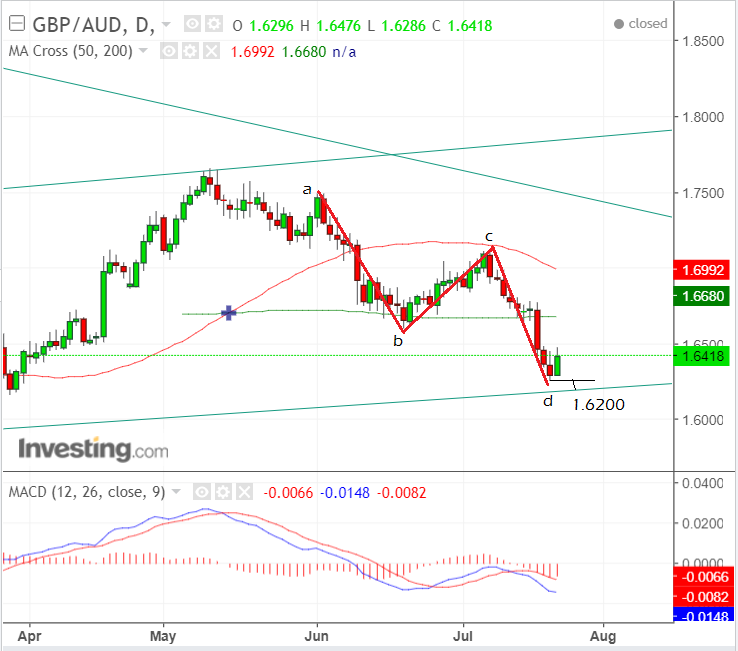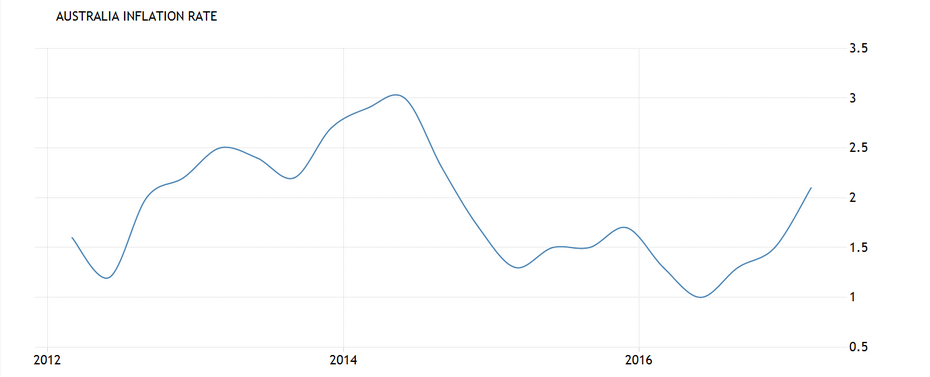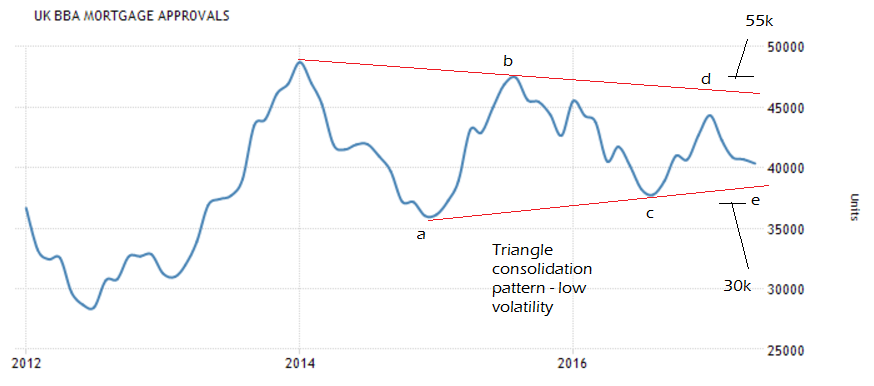Australian Dollar's Potential for Gains v Pound are Running Out

It's been a good run for the Aussie Dollar against its British counterpart of late, but our studies suggest that while more gains are possible, the extent of these gains is looking increasingly limited.
The Pound to Australian Dollar exchange rate (GBP/AUD) has been in a downtrend ever since highs at 1.76 highs were rejected back in mid-May and our technical studies suggest the trend lower remains intact and likely to continue.
A break below the current 1.6269 lows would provide strong confirmation of a continuation.
Even if there is a downside break, however, there is not a huge amount of scope for more downside, given our next target is at 1.6200 where a major trendline is situated; leaving only 69 pips for the taking.

It is possible the exchange rate may have bottomed and could be at the start of a bigger correction, however, it is too early to say for sure.
A larger abcd pattern has formed after the June highs and now looks almost complete.
The pattern’s c-d wave is about equal to the a-b wave which indicates it is probably almost complete.
If it is, the next move will be a countertrend correction or sideways move.
The MACD is not particularly bearish and reveals a lack of momentum in the c-d part of the down-move.
Get up to 5% more foreign exchange by using a specialist provider. Get closer to the real market rate and avoid the gaping spreads charged by your bank for international payments. Learn more here.
Data Ahead for the Australian Dollar
The main release in the week ahead is Australian Inflation data, which is out at 02.30 BST on Tuesday, July 25, and is forecast to rise to 2.2% in Q2 from 2.1% in the previous quarter.
Quarter-on-quarter it is forecast to rise by 0.4%, from 0.5% previously.
Inflation is rising robustly and is likely to show continued gains - see chart below.
Also on Tuesday, at 04.05 BST, Governor Lowe is forecast to speak and his comments may have an impact if they reflect a more upbeat view as has been the case in general with the reserve back recently.

Data Ahead for the Pound
GDP is expected to continue trundle along at sub-par levels around the 1.5-2.0% mark which we have grown accustomed to in 2017.
The first set of estimates for growth in the second quarter are released on Wednesday July 26 at 9.30 BST, and are likely to be the most significant release for the Pound in the week ahead.
They are currently expected to show a slightly slower 1.7% rise in GDP in Q2 compared to a 2.0% rise at the same time last year (in Q2 in 2016).
Such a result will pull growth down to the lower boundary of the current GDP growth rate range.
Quarter-on-quarter, growth in Q2 is likely to be 0.3% higher than it was in Q1, when it was only 0.2%.
The other release of note is Mortgage Approvals in June, from the British Banking Association (BBA).
These are also out at 9.30 on Wednesday July 23.
Mortgage Approvals have been oscillating in a subdued range for years since the great recession as illustrated in the graph below.

They have, however, formed an interesting triangle pattern over the last few years which provides clues of what might happen next.
Triangles almost always a precursor of periods of high volatility, and although we can’t tell which way the volatility will extend, it is highly probable there will be either a large swift spike higher or lower in the data.
The triangle has probably almost finished as it has formed 5 component waves - a,b,c,d,e - which is the minimum number to prove completion.
For confirmation, we would be looking for a move above 47,500 in an upside break; or below 37,000 in a downside break.
Using the height of the triangle at its widest as a guide we forecast a post-break volatile spike of about 8,000 -12,000 approvals higher or lower, so assuming the previously mentioned levels are breached, the upside target is 55k level and the downside 30k.
Given housing is such a key leading indicator for the economy this may be a key early warning for the general health of the economy going forward and thus the Pound.
A spike lower in approvals would probably drag down Sterling and vice versa for a spike higher.




